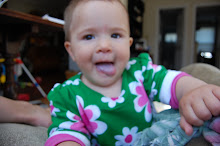
Christ, our western world metaphor. Our measurement of time. Ramifications of Our greatest Death. Threat? of what happens next seated at the right hand of god. d-o-g and what about carrying on Bodhisattva after 34.?
Simone Ali's Mother

- Cheryl Ann Blaise Robinson
- Iowa City soon, IA
- Born Boston Irish Catholic 3rd Generation. b. 1973, Picasso died, Vietnam too for US and Silent Spring, all still, all still felt.
Studio full of Prayers
.
Graduate School Attempt

Subscribe to:
Post Comments (Atom)
All Musings
- February 2012 (1)
- October 2011 (2)
- September 2011 (1)
- March 2011 (1)
- November 2010 (1)
- May 2010 (1)
- August 2009 (1)
- July 2009 (1)
- August 2008 (1)
- May 2008 (4)
- April 2008 (1)
- March 2008 (4)
- February 2008 (2)
- January 2008 (1)
- December 2007 (3)
- October 2007 (5)
- September 2007 (2)
IN FINITE
oil on panel 12"x24"
No comments:
Post a Comment